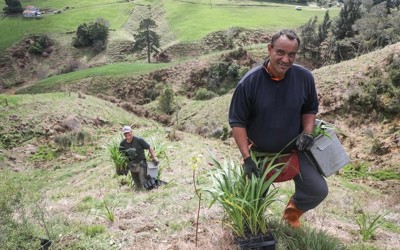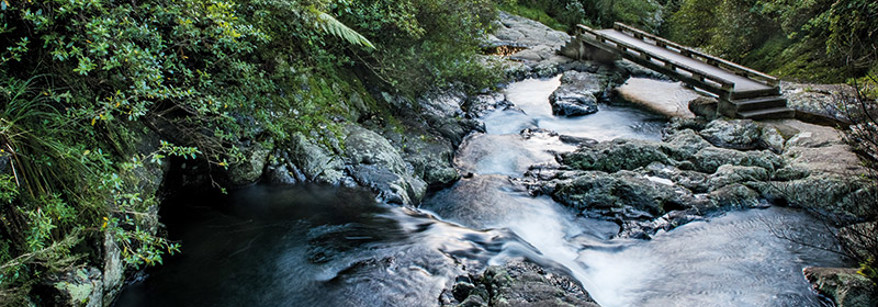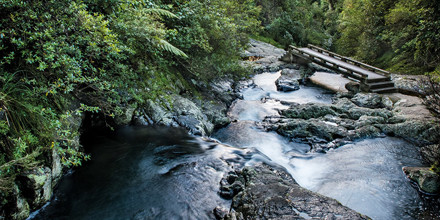We’re working together with locals to improve water quality in the Waitao catchment and make Kaiate Falls swimmable.
The Kaiate Falls are on the Kaiate Stream, which flows into the Waitao River and ends in the southeast corner of Tauranga Moana. The Falls are a popular spot for visitors and locals to enjoy but are not currently safe for swimming due to unsafe levels of E.coli faecal bacteria in the Kaiate Stream.
A Toi te Ora Public Health permanent health warning has been in place for the Kaiate Stream since 2015. Swimming in water that has high levels of E.coli increases people’s risk of becoming sick with symptoms that can include diarrhoea, vomiting, and skin, eye or ear infections.
Together with landowners, hapū, technical experts, Ngā Whenua Rāhui, Western Bay of Plenty District Council and the Waitao Landcare Group, we’re working to identify and address the main sources of bacteria and other contaminants in the Kaiate Falls and wider Waitao catchment.
Approximately 60 percent of the main river-banks in the Kaiate Stream catchment have now been fenced and in many cases planted, to improve water quality and wildlife habitat in the area.
Bacteria sources
Since 2015, we’ve increased our water quality monitoring and research efforts so that we can better understand the main causes of the poor water quality and explore new solutions. So far we’ve found that:
- Ruminant animals (cows, sheep, deer or goats) are the main source of faecal bacteria in the Kaiate Stream.
- Birds are also a source of bacteria at some Kaiate Stream locations, probably as a result of nesting and feeding activity above the Falls.
- Bacteria are entering the Kaiate stream from a number of different tributaries, including one with extensive forest cover, in an unpredictable manner.
- The largest contribution of the bacterial load is coming from the upper catchment which includes the Otawera Stream, Owairoa Stream and a small unnamed tributary.
- Other water quality and ecological health indicators such as temperature, nitrate and ammonia levels in Kaiate Stream are good compared to national and regional guidelines.
- Summer monitoring results show that E.coli bacteria levels improved from 2007 until 2014-15, but unsafe levels have been regularly in the Kaiate Stream each summer since then.
- So far this summer (2022-2023) E. coli bacteria levels are lower but it is too soon to know if we’ve fixed the problem. We need to look at all the data at the end of the summer monitoring season to see how much change there has been.
- There needs to be consistent low E. coli levels over a number of summer seasons to know we have fixed the problem and remove any health warnings.
More information
You can see the latest swimming water quality results for Kaiate Falls and other locations throughout the region at www.lawa.org.nz and results from recent catchment water quality sampling in the dashboard below. See below for additional resources and recent scientific reports.
Landowners can take action now. Regional Council offers practical advice and funding subsidies to help landowners complete works that can improve water quality as well as land and business productivity.
Funded works can include fencing, planting, nutrient budgeting, farm planning, detention bunds, treatment wetlands and many other activities.
Keep in touch
Please contact us if you have question or would like to find out how you can get involved:
Hayden Schick, Bay of Plenty Regional Council Land Management Officer
Hayden.Schick@boprc.govt.nz
Ph: 0800 884 880
References
Kaiate Catchment E. coli Sampling Map Viewer
Scheme news and updates

The first of more than 60,000 native plants have gone in the ground on properties which sit above the Kaiate Falls, to help improve water quality and increase biodiversity in the Waitao catchment.
The plantings are the first of many, resulting from the nearly $1.5 million successfully secured by Bay of Plenty Regional Council through the Government’s One Billion Trees funding in August.






